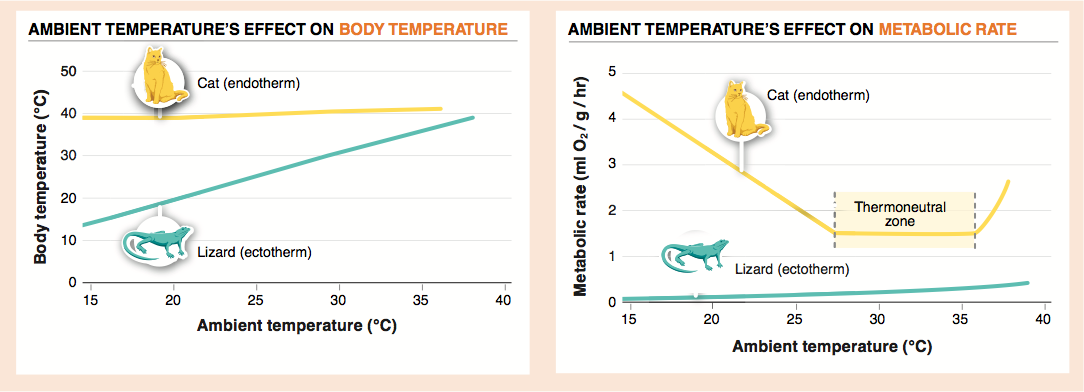
Chapter 20. Chapter 20 Graphic Content
Introduction

Instructions
Review the information provided in the graph to answer each question below.
After submitting your answer, you will be provided feedback to check if your response is correct.
(This activity contains 8 questions.)
1.

1. Is the body temperature of cats influenced by the ambient temperature? Provide data to support your answer.
2.

2. What would you expect the lizard body temperature to be when the ambient temperature is 10° C? Why?
3.

3. What is the unit of measure for metabolic rate? Is the rate higher in cats or lizards?
4.

4. Body weight in cats is typically much greater than in lizards. How is this difference accounted for in the lower graph?
5.

5. In lizards, what is the percentage increase in metabolic rate between 27° and 36° C? What is the percentage increase for cats across that range?
6.

6. Suggest a way to re-plot these data that would better highlight the greater rate of increase in the metabolic rate of lizards relative to cats between 27° and 36° C. What is a drawback of your alternative version of the graph?
7.

7. Examining the graph on the right, what is meant by the phrase “thermoneutral zone”? Is there a thermoneutral zone for lizards? Why or why not?
8.

8. From the perspective of relative metabolic costs, under what conditions is it more efficient to be an endotherm? Under what conditions is it more efficient to be an ectotherm?
Activity results are being submitted...